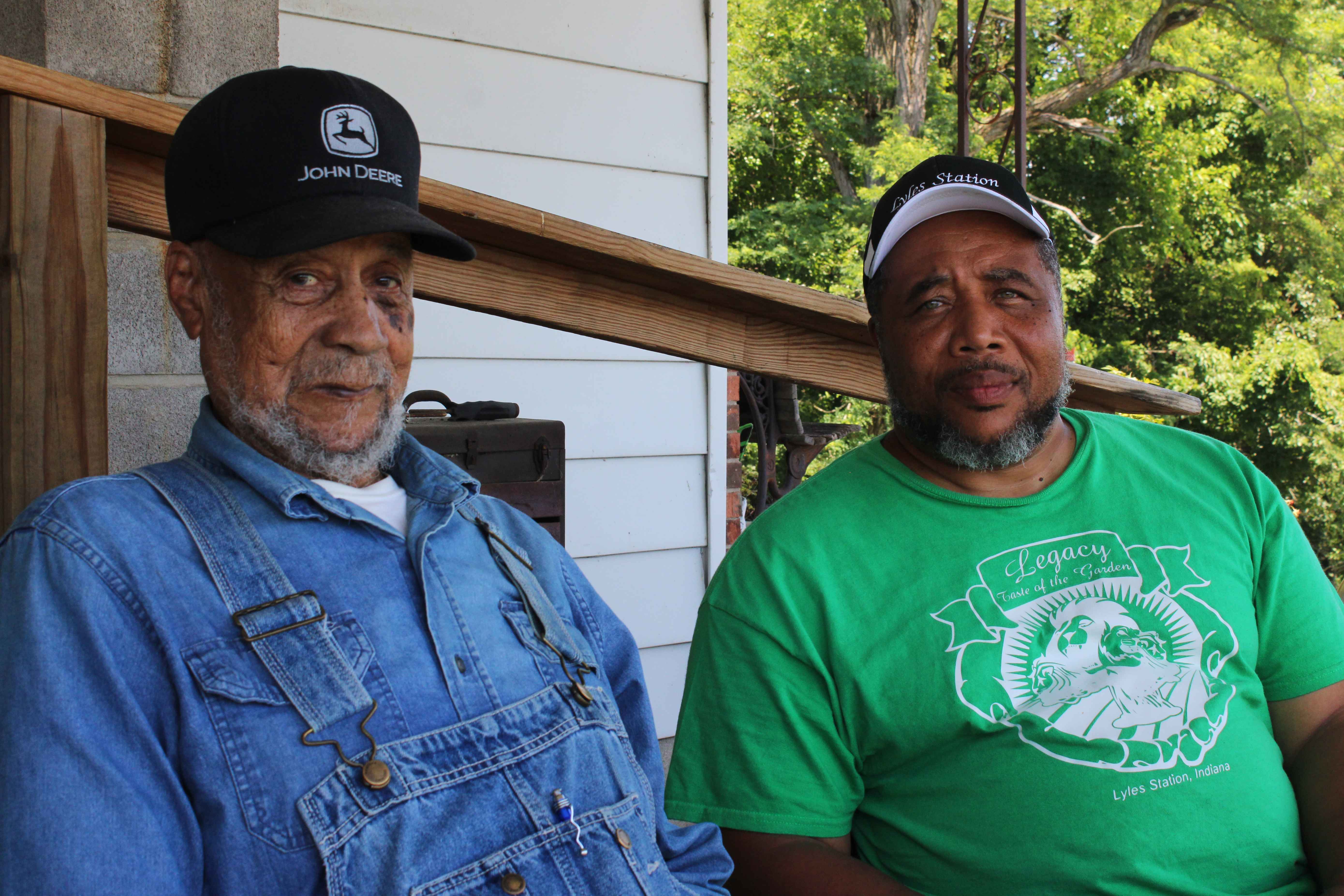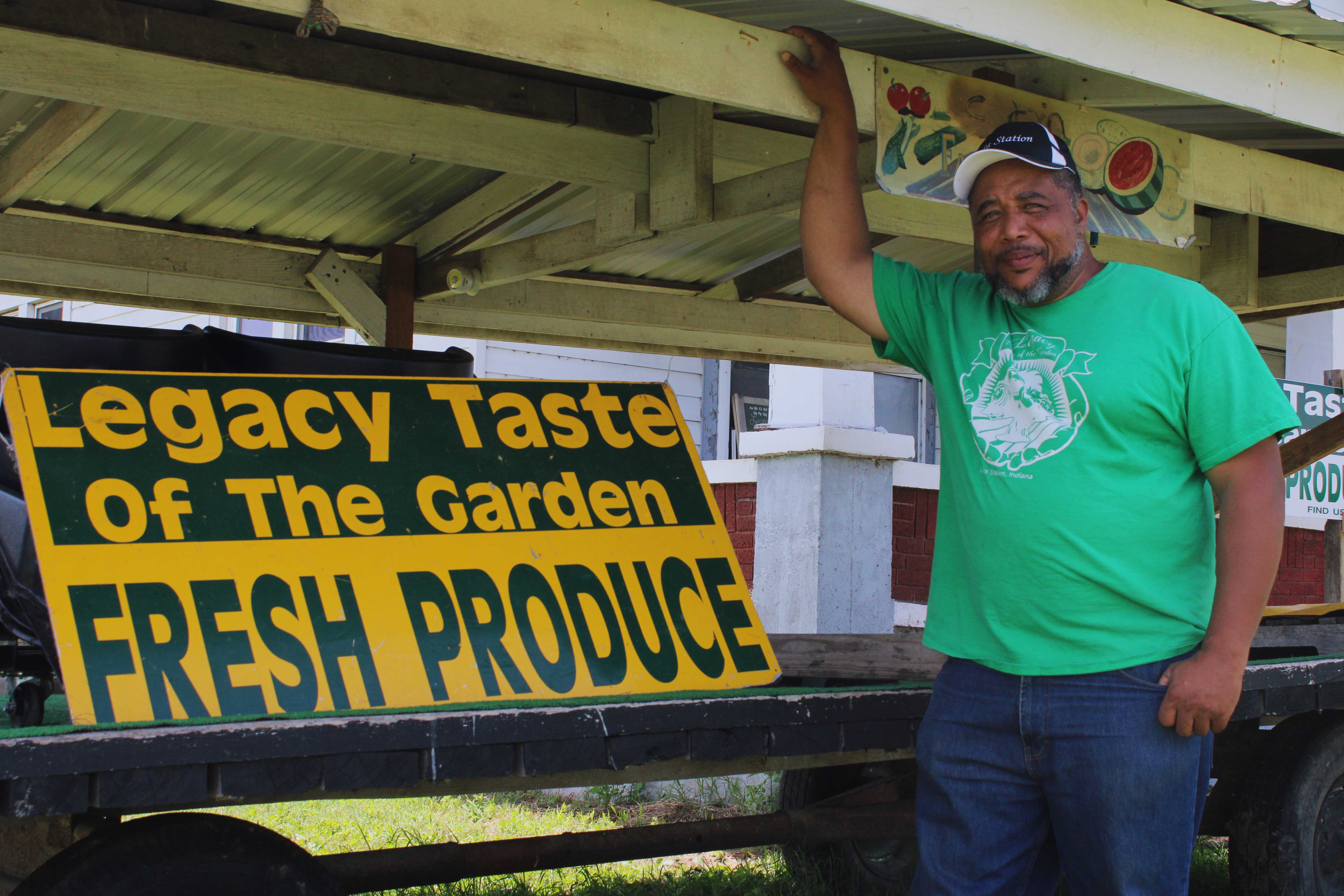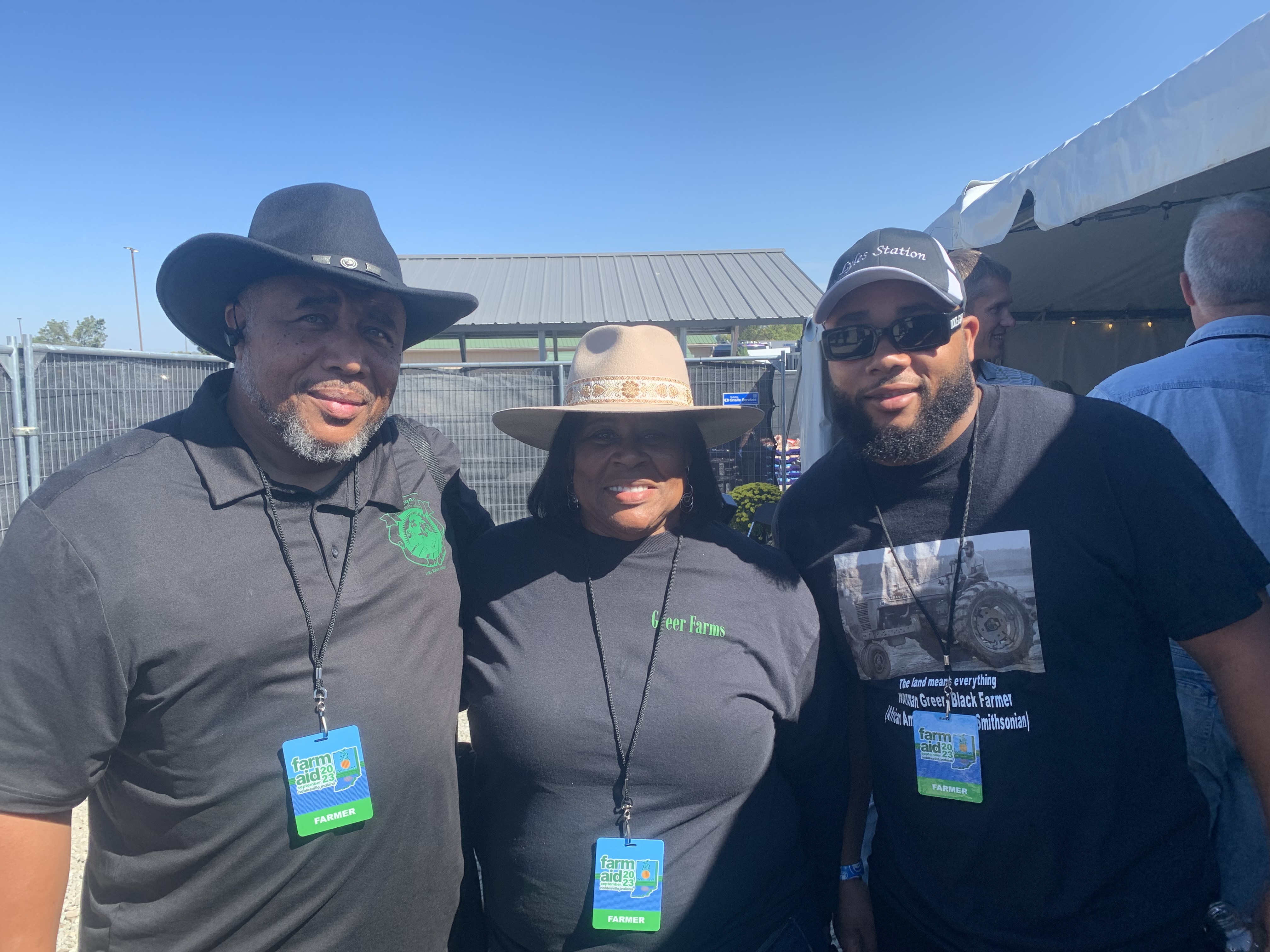Where Black history, education and agriculture endure: the legacy of Lyles Station
Nestled in the southwestern corner of Indiana bordering a railroad is the town of Lyles Station, a small community with a rich past. Here, history, education and agriculture are intertwined, and one family is carrying on its legacy as the last remaining African American settlement in the state.
“Our name, Legacy Taste of the Garden, stems from the legacy of Greer farms, which are part of the Smithsonian African American Museum of History and Culture,” said John Jamerson, co-founder of the sustainable farm operation and outreach program with his wife, Denise, and son, DeAnthony. “My father-in law was featured in that as one of the last African American farmers who are still farming pre-Civil War family-owned land. We’re wanting to pass down that legacy and bring awareness back to agriculture.”
 Jamerson (right) and father-in-law, Norman Greer
Jamerson (right) and father-in-law, Norman Greer In the early 1800s, the Greer family established family farms that built the community’s foundation. Lyles prospered, opening stores, a sawmill and the first post office north of the Mason-Dixon. As a part of the Underground Railroad, the town was a haven for enslaved people on their journey to freedom.
Lyles citizens served in every war from the Civil War on and acted as bold leaders in politics. An early champion of civil rights, the town successfully petitioned to establish a school system. An Indiana Supreme Court case,brought by resident James Roundtree, ended in a victory that brought adequate infrastructure to the town.
A key to the town’s success was its train station, named after the Lyles brothers who settled shortly after the Greer family. The station served as a critical depot, as the only place between Louisville, KY and St. Louis, MO where African Americans could get on and off. Passengers could stop and buy fresh produce and goods and transport them back to their own communities, supporting a network of Black settlements and creating a steady income that sustained the agricultural Lyles Station.
“Everyone was basically one of three things: a farmer, a teacher or a preacher,” Jamerson said. “Agricultural production was high-end, and the school was highly regarded. Many teachers went on to teach at different universities and things of that nature. We keep that focus on agriculture and education alive by disseminating knowledge of farming, entrepreneurship and health across the state and providing outreach to BIPOC (Black, Indigenous and people of color) growers.”
Legacy Taste of the Garden brings access to fresh produce and nutrition education to food deserts, in which residents’ access to affordable, healthy foods like fresh fruits and vegetables are restricted due to an absence of grocery stores in the area. Sustainability is at the core of Legacy’s mission, in both their sustainable growing methods and encouraging a self-sustaining, entrepreneurial lifestyle.
 Jamerson stands next to his farm stand across from the railroad running through Lyles Station.
Jamerson stands next to his farm stand across from the railroad running through Lyles Station. 
“If you’ve ever gone long enough missing meals to where you’ve gone from hungry to what we call ‘hangry,’ you can imagine then, how that feels: irritable, angry, you can’t concentrate,” Jamerson said. “It’s one thing when you have one individual; it’s another when you have a whole community feeling like that. We’re trying to provide a food supply chain and teach our people about the importance of eating properly, so that we can make those communities a better place to live.”
Legacy partners with organizations like churches and schools in areas considered food deserts to introduce agriculture back into the youth. Jamerson takes community members through the process of growing food, taking it to market and creating value-adding products and avenues of income through agriculture.
“Most of the kids and individuals in these communities shy away from agriculture due to the stigma that it has and the reminder of slavery,” Jamerson said. “We explain to them that this country was built off agriculture, and everything that they see, everything they desire or wish to possess can come from agriculture and a self-sustaining lifestyle.”
 From left to right: John, Denise and DeAnthony Jamerson, 5th and 6th generation farmers, were Featured Farmers at Farm Aid 2023. Photo submitted by John Jamerson.
From left to right: John, Denise and DeAnthony Jamerson, 5th and 6th generation farmers, were Featured Farmers at Farm Aid 2023. Photo submitted by John Jamerson. A mission of outreach that aligns with Purdue University’s own land-grant mission has led to building a relationship between Legacy and Purdue Extension. Legacy’s Black Loam Conference connects farmers to resources that they may not be aware of, like the Indiana AgrAbility program. Through partnering with organizations designed to help farmers like Extension and the U.S. Department of Agriculture, Legacy has created a network of growers and experts to empower young and African American farmers.
“Extension resources cover a plethora of things. You have your 4-H programs, Master Gardner programs, workshops—these are all things we introduce to different groups and partner with to bring into new communities,” said Jamerson. “Our thing is not to reinvent the wheel, but to assemble the vehicle. Bring all of those parts together so that the car can run.”
Nathan Shoaf, diversified farming and food systems program leader and urban agriculture specialist for Purdue Extension, said Legacy’s interest in disseminating science-based information and ability to form networks makes for a great partnership.
“They’ve got a great history and wealth of knowledge, and they’re amazing at forming connections and establishing trust with farmers. This aligns really well with my mission as an Extension specialist.”
“It’s unique to have that history, to hang on to it for so long and to evolve over time. I think Legacy is taking a new spin on that by being a hub for so many growers and producers and bringing people together. It’s an incredible story, and I think more can be done to elevate that story.”







